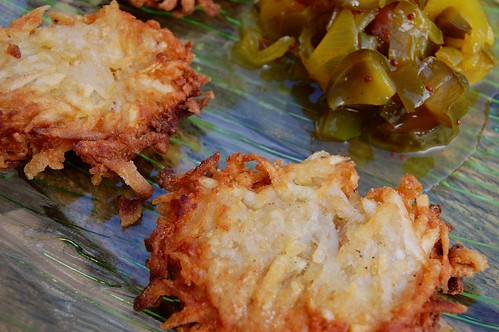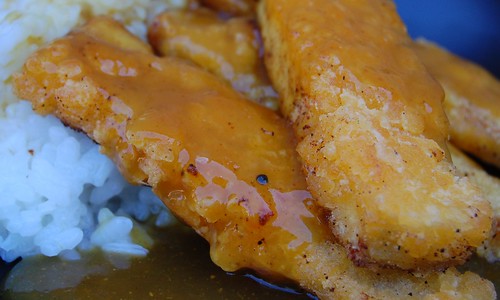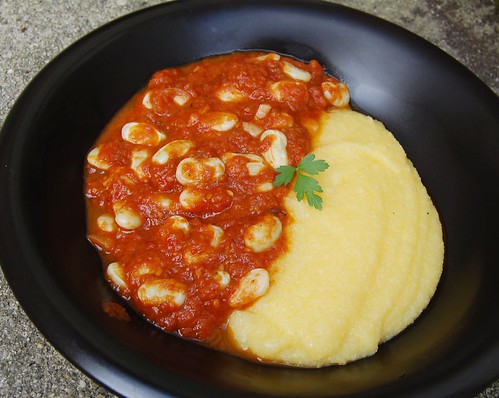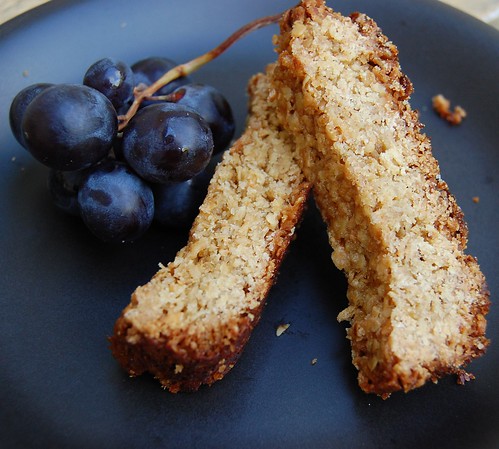 Latkes with sweet green cucumber pickle.
Latkes with sweet green cucumber pickle.Part of my current difficulties with having an interest in cooking comes down to an immature (think two year old toddler) tantrum about not wanting to eat what's so abundant it's boring.
We have a lot of potatoes this year (and tomatoes and courgettes) and before I've even eaten many I'm telling myself I'm sick to death with them. Pretty stupid because you can make so many very different dishes with potatoes, all of them delicious and mostly easy too. I've given myself a talking to and will, in penance, attempt a short series of potato based posts, interspersed with anything really good that comes up, showcasing the many ways the spud can make a good meal.
Latkes are potato cakes made with grated raw potato and fried in plenty of oil. So far, so good but when you actually come to research this traditional Jewish recipe, which is made especially for Hanukkah but also at other times of the year, you find that the variations on the theme are legion with vegetables, flavourings and even cheese added.
Consequently I have little concern over offering my own recipe version, which is veganised by leaving out the egg! I have to come clean though and admit these are the first really successful potato pancakes I've ever made, previous attempts have been passably nasty but at least this has allowed me to identify the essential points to address.
Peel and grate some potatoes. Much is made of the variety but I used a mix of waxy (Pink Fir Apple) and floury (old Epicure) and didn't have any problem. Use a large grater, it's less grief in my opinion. Three medium potatoes made enough for eight cakes.
Finely chop a small onion and add it to the potato. Don't add too much, onion is watery and sugary. The water makes the cakes gummy and the sugar will burn before the potato part is cooked. On the other hand, the flavour is much improved by the allium.
Put the potato onion mixture onto a clean tea towel, gather up the corners, go outside somewhere and comprehensively take your aggression out on it, squeezing those vegetables until they are as dry as really dry things.
Put the dried veg into a bowl and season lightly with salt and pepper. Now, I didn't weigh anything this morning so you'll just have to go with the flow. Sprinkle over enough white flour to coat each shred with a light dusting. Use your fingers to toss the flour through the mixture and allow any excess to fall to the bottom of the bowl. Using your hands take small portions of the floured potato and squeeze it into small flat cakes, not more than 1cm thick and about the size of the palm of your hand. Do several and set them to one side.
Heat a heavy frying pan with about 1cm of olive or other fresh oil in it until it is hot but not smoking. Place 4 or 5 of your little cakes into the oil, not too close to each other. They should sizzle as they hit the fat, then reduce the heat a little. You need to cook the cakes through before the outside burns so expect to take several minutes for each batch of latkes. Squash the cakes down as the first side cooks to spread them out a little and turn them once during cooking so that each side becomes golden.
Drain on kitchen towel and serve as quickly and as hot as possible.
Tradition has them served with apple sauce which I think would be lovely but I didn't have any so had sweet cucumber pickle instead which made a similar combination.





